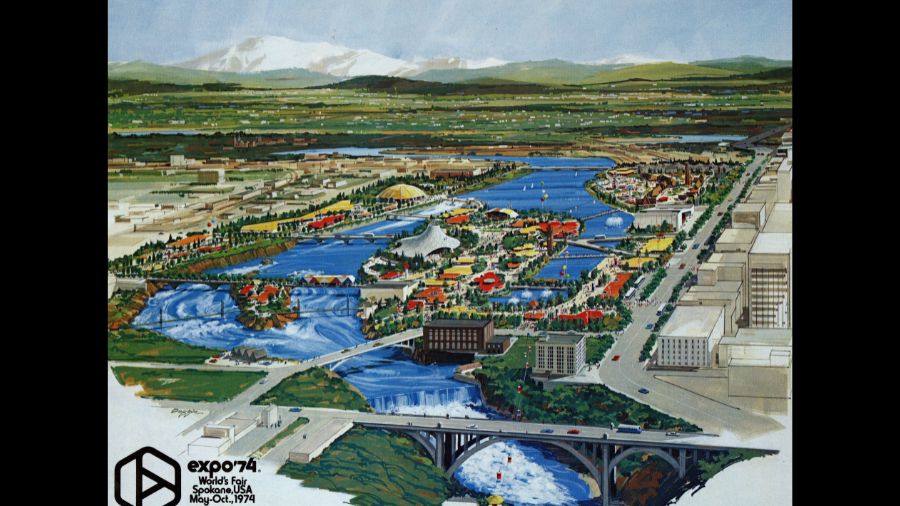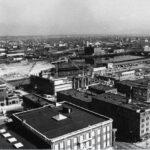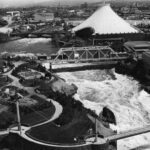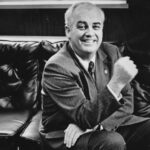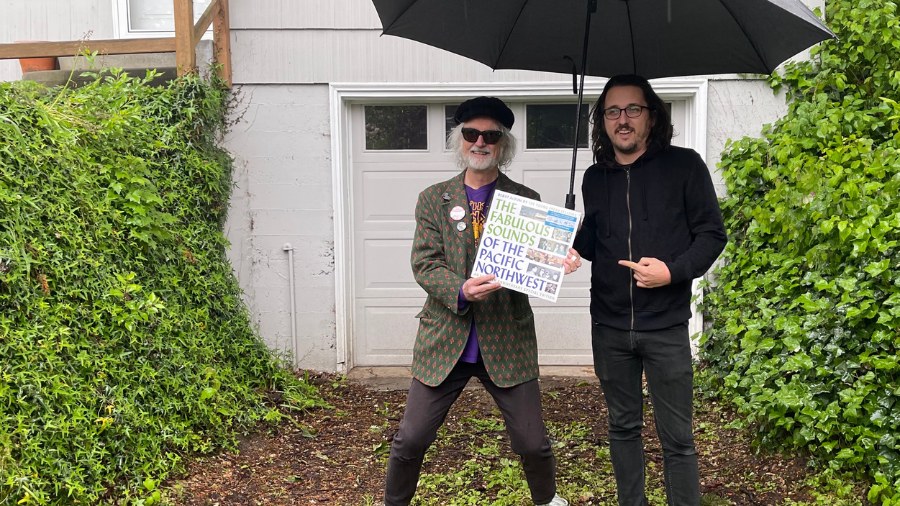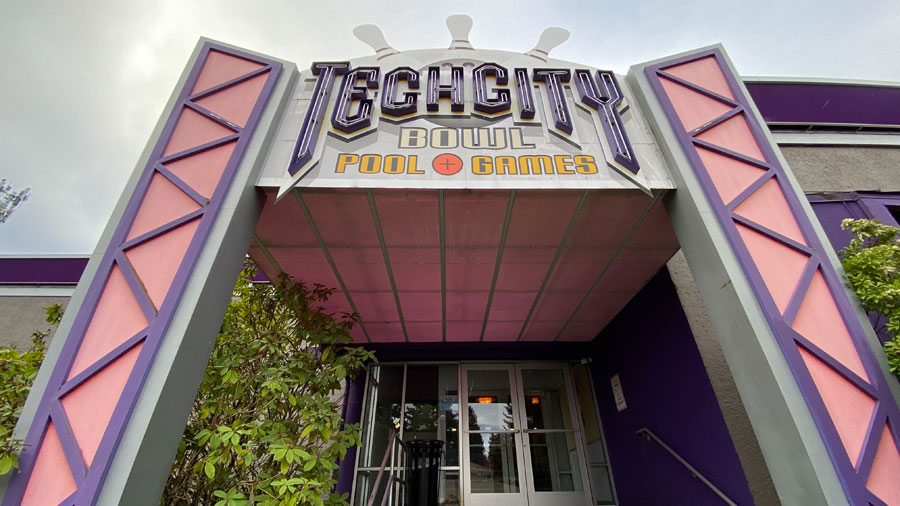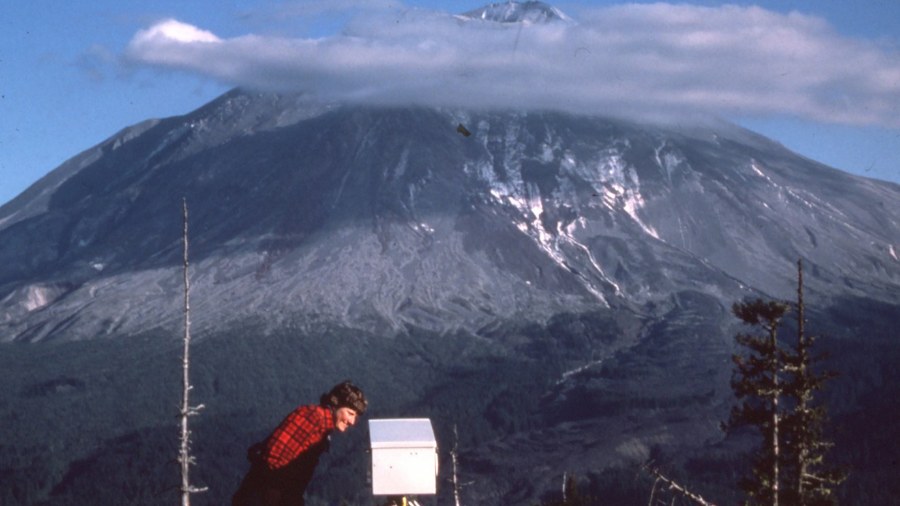‘Garbage Goat,’ ‘Governor Evidence’ mark 50 years post-Spokane Expo ’74
Mar 6, 2024, 4:59 PM
This year marks a half-century since Spokane hosted its very own world’s fair – the event known as Expo ’74. The 50th anniversary will be celebrated in Spokane with a series of events throughout the spring and summer.
The World’s Fair held in Seattle in 1962 did so much to alter the course of Seattle’s history, it can be easy for those west of the Cascades to discount how much the City of Spokane was also influenced and changed by the international event a dozen years later.
More on Seattle’s World’s Fair: Where were you in ’62?
Seattle exemplified Space Age at World’s Fair
For the fair in Seattle, the city adopted the theme of “Century 21,” which exemplified the Space Age and looked to a future enhanced and improved by technology. But more than 60 years on, that style of futurism – arguably still best embodied by the Space Needle and the Monorail – sometimes can seem a little antiquated or even hollow (as connected to the city’s image as the Needle has become).
Professor Bill Youngs at Eastern Washington University in Cheney, just west of Spokane, is the premier “Expo Expert.” He authored the definitive history of Expo ’74, a book called “The Fair and the Falls.”
Youngs said Spokane chose environment and ecology as the theme for Expo ’74. Though it emerged during a heady time for environmentalism – a few years after the first Earth Day, not long after the creation of the U.S. Environmental Protection Agency – this theme seems to have weathered the passage of time a little differently than “Century 21” and perhaps even aged a little better.
And, Youngs said, it’s a theme that served to influence every World’s Fair that came after.
Spokane sparks future environmentalism themes
“Spokane was the first world’s fair with an environmental theme,” Youngs told KIRO Newsradio.
Researchers looking into the history of fairs around the globe, told Youngs, “Every world’s fair since Expo had an environmental theme” and that Spokane is credited as “having started this movement towards environmental themes.”
The latest on Seattle’s environment: Seattle-area home sales impacted by climate, environmental factors
“By gosh, you’ve got Spokane,” Youngs said. “A little old small city, isolated, but very much in the forefront of celebrating and inquiring into the topic of environmentalism within a world’s fair.”
So we’re quite proud of that,” Youngs continued.
Another thing Youngs said the community is quite proud of is that a town the size of Spokane – with a population of just 245,000 in 1974, or less than half the size of Seattle in 1962 – could pull off a World’s Fair.
The other city vying to be certified by the Bureau of Expositions at a meeting in Paris around that same time was Philadelphia. That city ultimately backed out of theirs, but King Cole, the executive director of the fair who gets much of the credit for Expo ’74’s success, told the Paris people Spokane was forging ahead.
“It underscores the fact that it was just so improbable that this small town could put it together,” Youngs said.
And, said Youngs, King Cole’s skillful guidance and the community stepping up are “a study in civic leadership and the capacity of just the right persons at the right time to make something happen. Because if you were to look at it 100 years ago, or 80 years ago and say, ‘Will Spokane ever have a World Fair?’ I’m sure they’d say, ‘I don’t even want to think about that.'”
How the World’s Fair transformed Seattle
It’s been generally accepted in Seattle for the past 60 years that the 1962 World’s Fair transformed the city in every possible way (though this civic “given” is fading somewhat as the living memory of the fair and its aftermath recedes with the march of time).
The transformation was economic, cultural, and civic in nature. Its most visible legacy is still the Seattle Center, which led directly to major league sports when the Seattle Supersonics of the NBA debuted in 1967 at the old Coliseum (what’s now Climate Pledge Arena). But years before the first tipoff at center court, the success of the 1962 fair gave civic leaders the confidence and the skills to attempt all kinds of initiatives, including the 1965 launch of the major infrastructure ballot measures called Forward Thrust.
Saving Washington history: Everett official dodges key question about gazebo-saving compromise
Bill Youngs said Expo ’74 paid similar civic dividends. He admits the 1974 event didn’t make Spokane a “major league” sports city like Seattle, but it did lead to new infrastructure, which is still paying off in the events Spokane attracts to this day.
“We recently had the indoor collegiate championship of the whole country right here in Spokane,” Youngs said. “And these are the kinds of things that I think probably would never have happened without the kind of boost in confidence and know-how (from Expo ’74).”
The impact of the World’s Fair on Spokane
When it comes to the physical transformation in Seattle versus what happened in Spokane, Youngs says Expo ’74 had a far greater impact. Before the fair created Riverfront Park, most of the Spokane River through downtown was covered by concrete and railroad bridges, and the river had been pretty much hidden away for decades.
The changes wrought by Expo ’74 to that central location, along both banks of the now-daylighted river, have become inseparable from Spokane’s image and, more importantly, from how people inhabit the core of the city on a daily basis.
“Not to take anything away from the location of Century 21,” Youngs said, referring to Seattle Center, “it’s a lovely park, but it’s basically a piece of ground. Whereas, there’s a piece of ground in the case of Expo ’74 but there’s also a magnificent waterfall and rapids that had been almost totally forgotten in the years before. And now it’s arguably the most dramatic urban riverfront anywhere in the country.”
Spokane museum opening exhibit in wake of Expo ’74
To mark the 50th anniversary, the City of Spokane is coordinating a series of special events this spring and summer. One of the first opportunities to celebrate will come in early May with the opening of a major new exhibit at the Northwest Museum of Arts & Culture (the “MAC”) in Spokane.
The MAC’s Johnston-fix Curator of Archives and Special Collections Anna Harbine told KIRO Newsradio the MAC is the official repository for all the archival documents, business papers and the photo collection from the fair.
The exhibit, called “It Happened Here: Expo ’74 Fifty Years Later” will feature a large assortment of pictures and posters from that collection, and three-dimensional artifacts, too – including one of the gondolas from the skyride, as well as plenty of Expo ’74 souvenirs.
Harbine said while Expo ’74 was the first environmentally focused world’s fair with an emphasis on taking care of the earth, water and the sky, that didn’t stop organizers from authorizing the manufacture of several landfills’ worth of tchotchkes to sell to tourists (and locals, too) as souvenirs.
Looking back on World’s Fair memorabilia
“(Expo-themed) ashtrays filled with jellybeans (were sent) to sponsors who had committed to help sponsor the fair and fund the fair,” Harbine said. “And they had lapel pins. You’ll see them everywhere in the thrift stores. They’re kind of a staple.”
If you go thrifting you’ll usually see some sort of commemorative Expo plate or an ashtray. A lot of ashtrays,” Harbine continued.
Many Seattle area residents can likely remember a similar phenomenon well into the 1970s and 1980s when it seemed that nearly every garage sale was required to have at least one partial set of commemorative 1962 Seattle World’s Fair drinking glasses on hand and available for purchase.
Along with the ashtrays and lapel pins – and the civic confidence and know-how – Bill Youngs said one of the most popular legacies from Expo ’74 is the “Garbage Goat,” which is still on duty as a distinctive trash receptacle at Riverfront Park.
“Remember, the theme of the fair is environmentalism,” Youngs said. “And part of that is just doing the right thing with trash.”
More from Feliks Banel: History hidden within NOAA’s ‘Inland Water Wind Reports’
Explaining the ‘Environmental Goat”
“The Environmental Goat,” Youngs said, using an alternate name for the iconic artifact, “is a metal goat that was built in, and it’s still there today. And it had a kind of vacuum, a suction process inside it, where you could hold up, say, a candy wrapper or something (to its mouth), and it would be sucked up and the garbage would be taken care of.”
It was fun watching children, then and now, with their candy wrapper or whatever kind of squeal with delight, as the goat took the candy wrapper but didn’t take their hand,” he continued.
Along with the local legacies, one national historical footnote to Expo ’74 comes courtesy of Dan Evans, who served three terms as Washington’s governor, including during the run of the 1974 fair.
As many people still remember, the spring of 1974 was in the thick of the Watergate scandal, so it was a bit controversial for some that President Richard Nixon was scheduled to speak at the opening ceremonies. Still, the plan went ahead since, Anna Harbine said, some people thought it would be controversial to un-invite Nixon.
Opening Day at Expo ’74 was Saturday, May 4, which happened to be just a few weeks after Congress had subpoenaed the White House for tape recordings of Oval Office meetings and the White House had given only transcripts. There was a legal battle underway to get the actual audio as evidence in the impeachment inquiry – a legal battle that would stretch to early August.
Nixon accidentally terms Gov. Evans ‘Gov. Evidence’
On the morning of May 4, Air Force One landed at Fairchild Air Force Base (AFB) west of Spokane. Gov. Evans and first lady Nancy Evans, who recently died, were together in Fairchild to greet the president and Mrs. Nixon.
In an interview in 2014 for public television, Evans said event organizers had set up a podium and PA system at Fairchild AFB right next to Air Force One.
“And President Nixon got up on the podium and I introduced him with, you know, the simple statement, ‘The President of the United States,’ Evans said. “And he turned to me in a very clear voice and said, ‘Thank you, Governor Evidence.’ Then he said, ‘I mean Evans.'”
“And of course, the (national) press corps there, they could hardly contain themselves,” Evans continued, chuckling gently at the memory.
More on Dan Evans: Former Wash. Gov. Dan Evans and the 1960s civil rights struggle
The formal hearings in the impeachment inquiry began the following Thursday, May 9. President Nixon resigned in August. Thus, when Expo ’74 closed in November of that year, President Gerald Ford was heard – on tape – at the closing ceremonies.
It’s believed to be the only time in American history when one president helped open a fair and another helped close it down.
You can hear Feliks every Wednesday and Friday morning on Seattle’s Morning News with Dave Ross and Colleen O’Brien, read more from him here, and subscribe to The Resident Historian Podcast here. If you have a story idea or a question about Northwest history, please email Feliks here.

